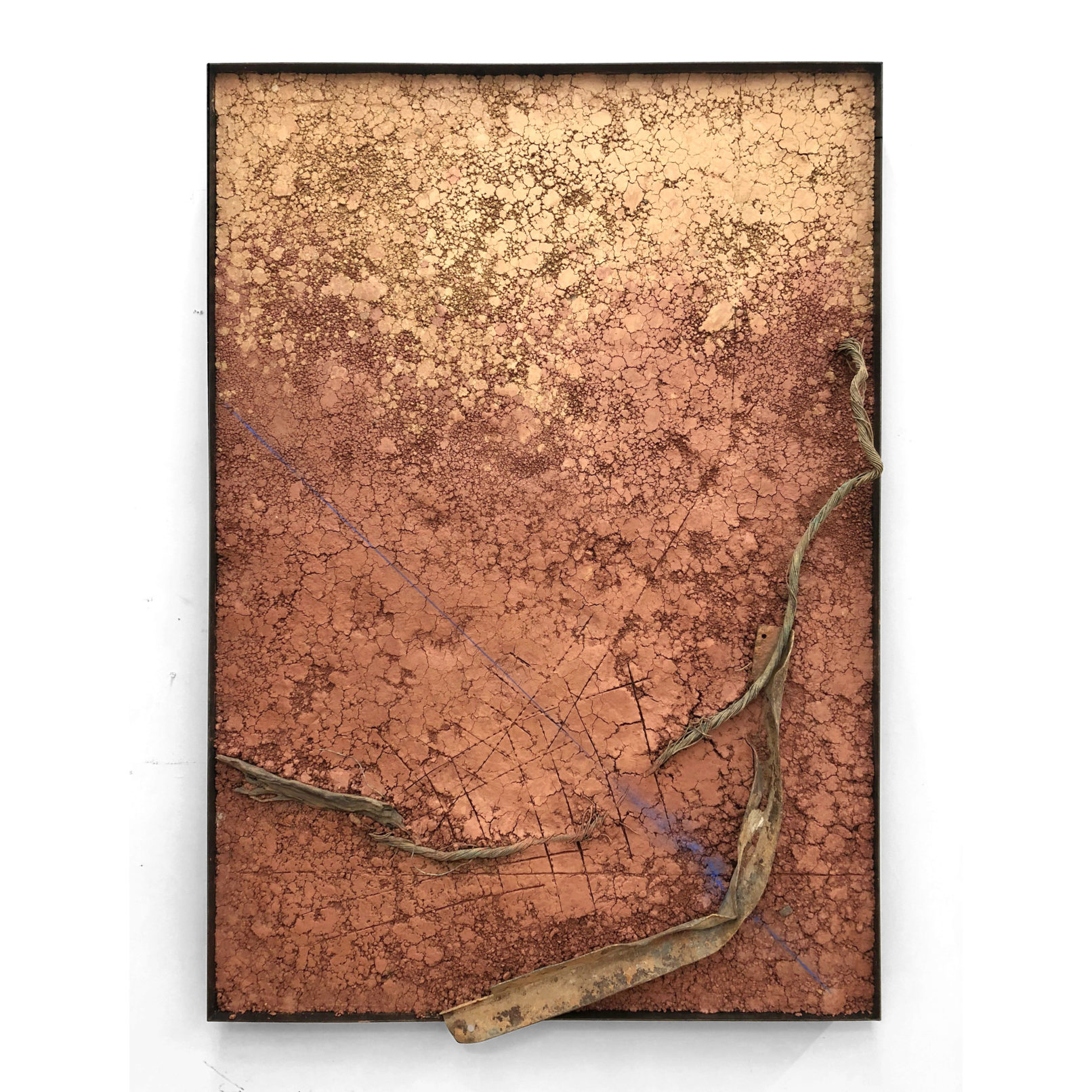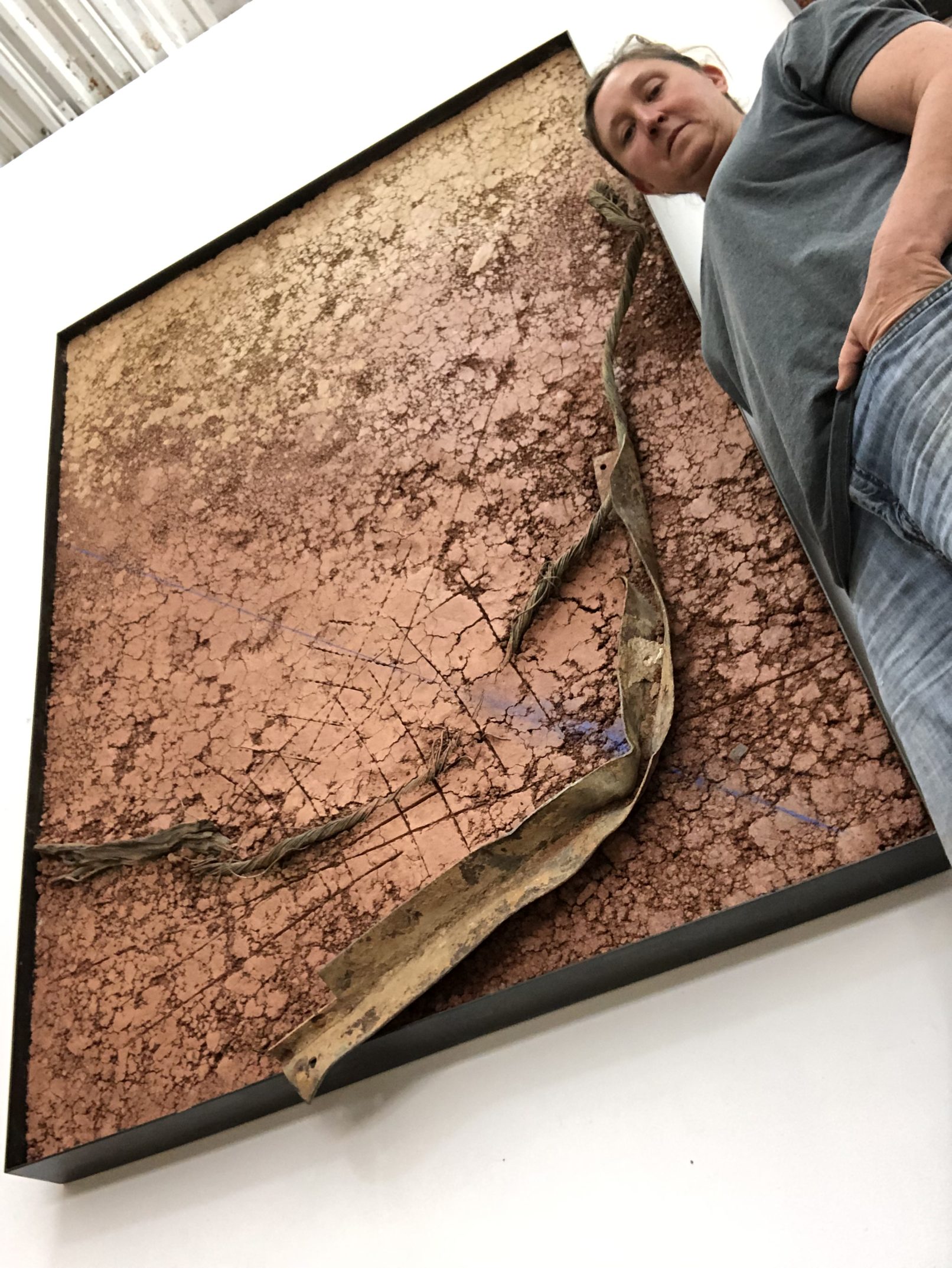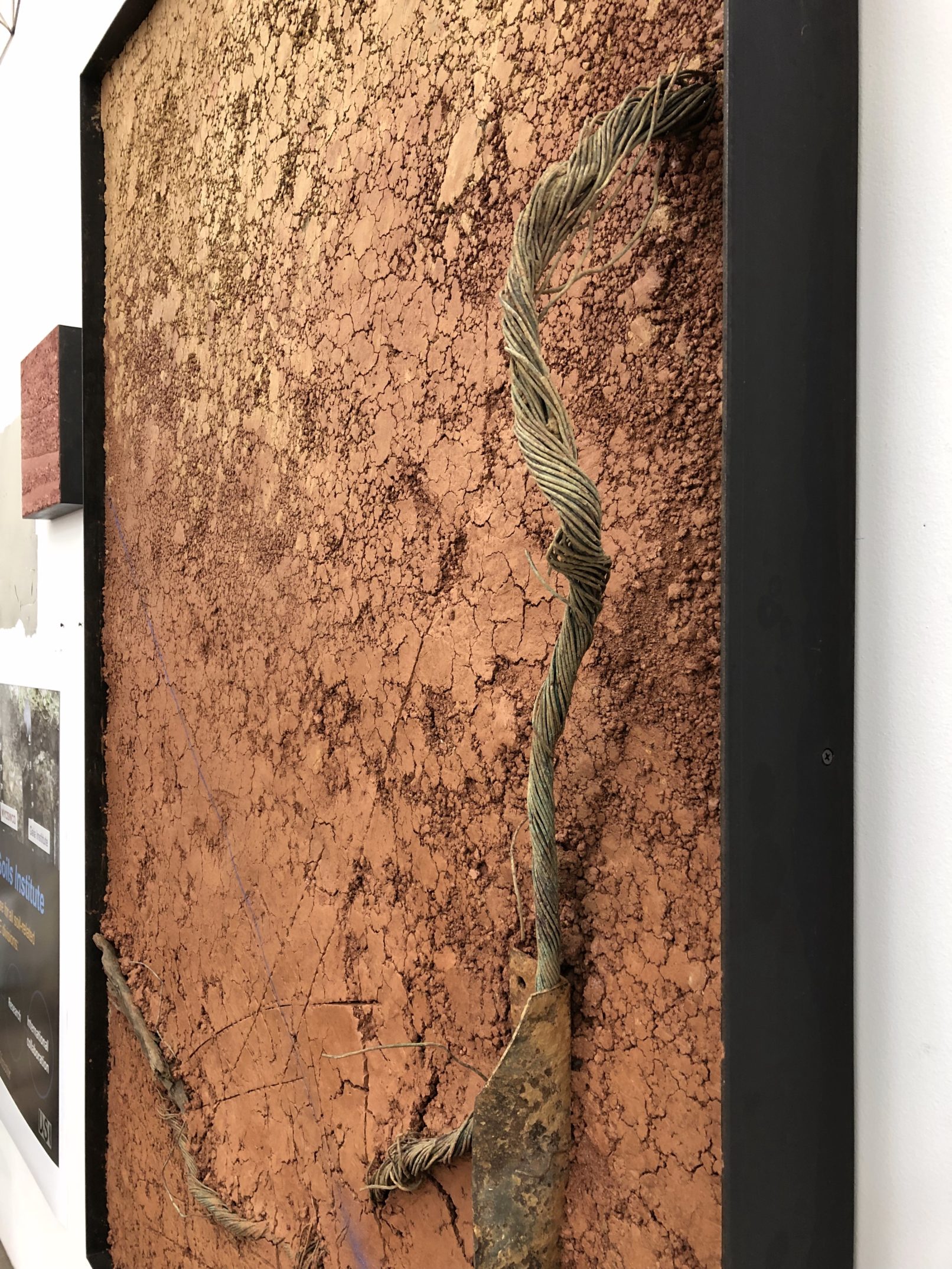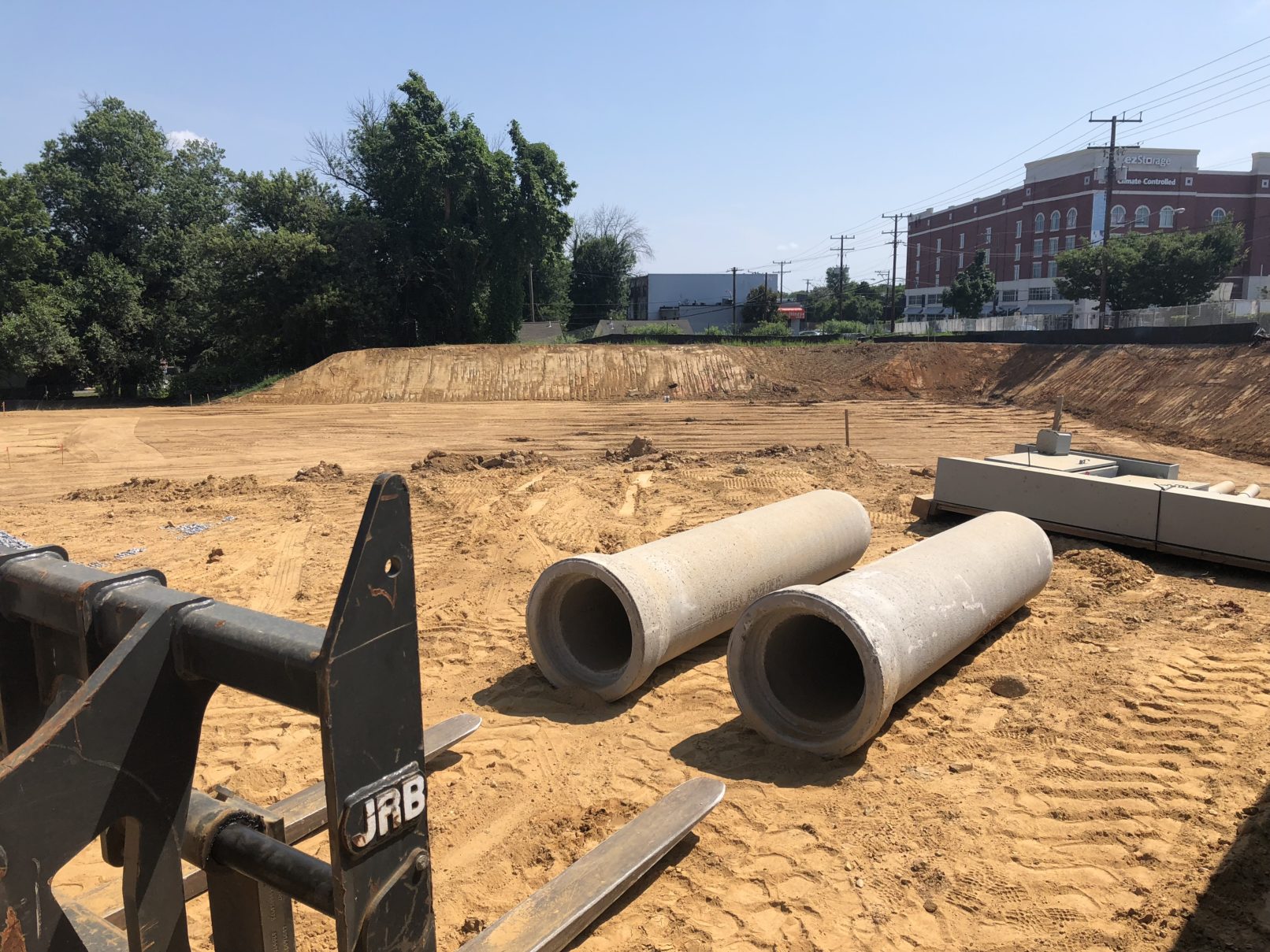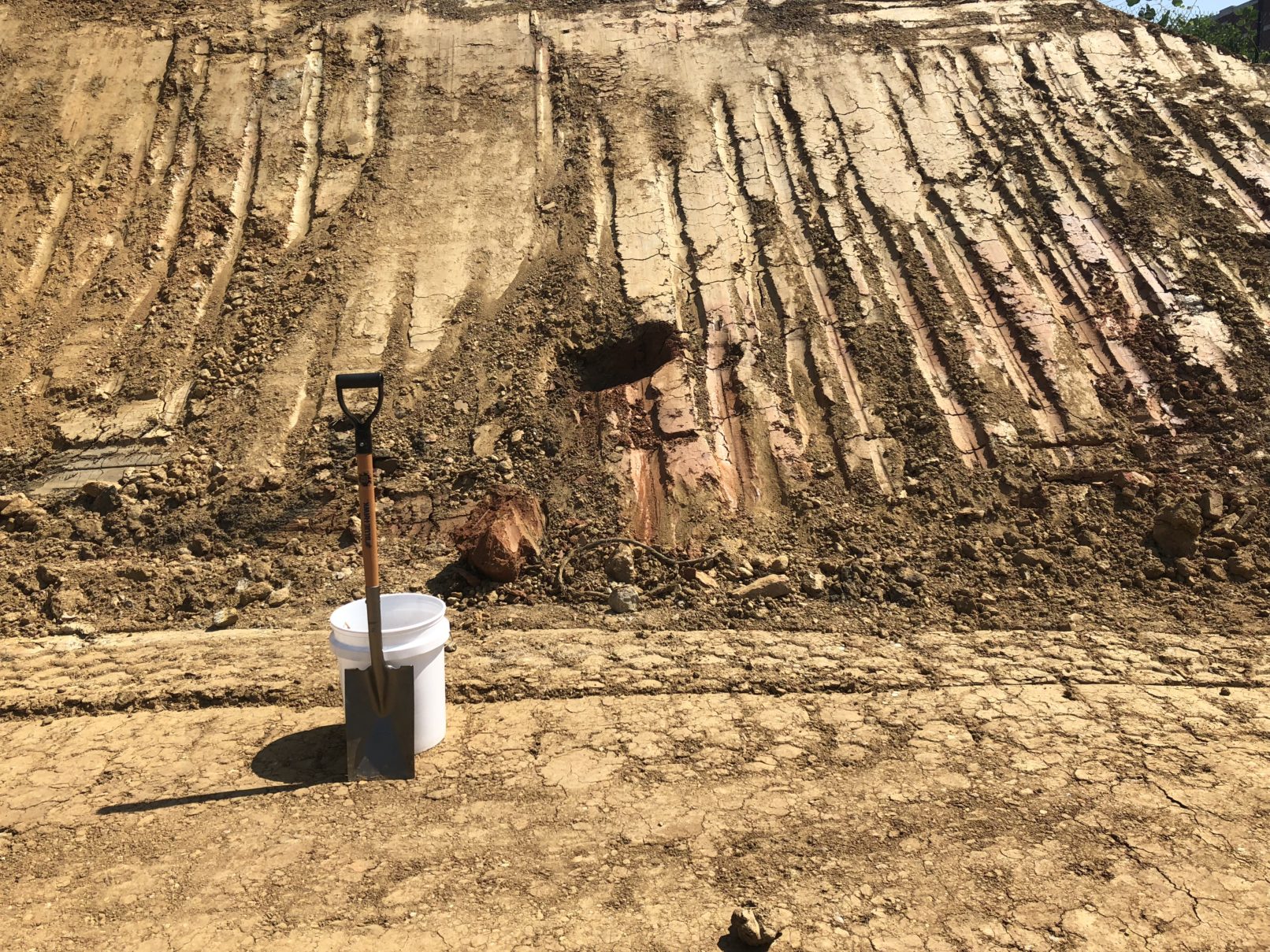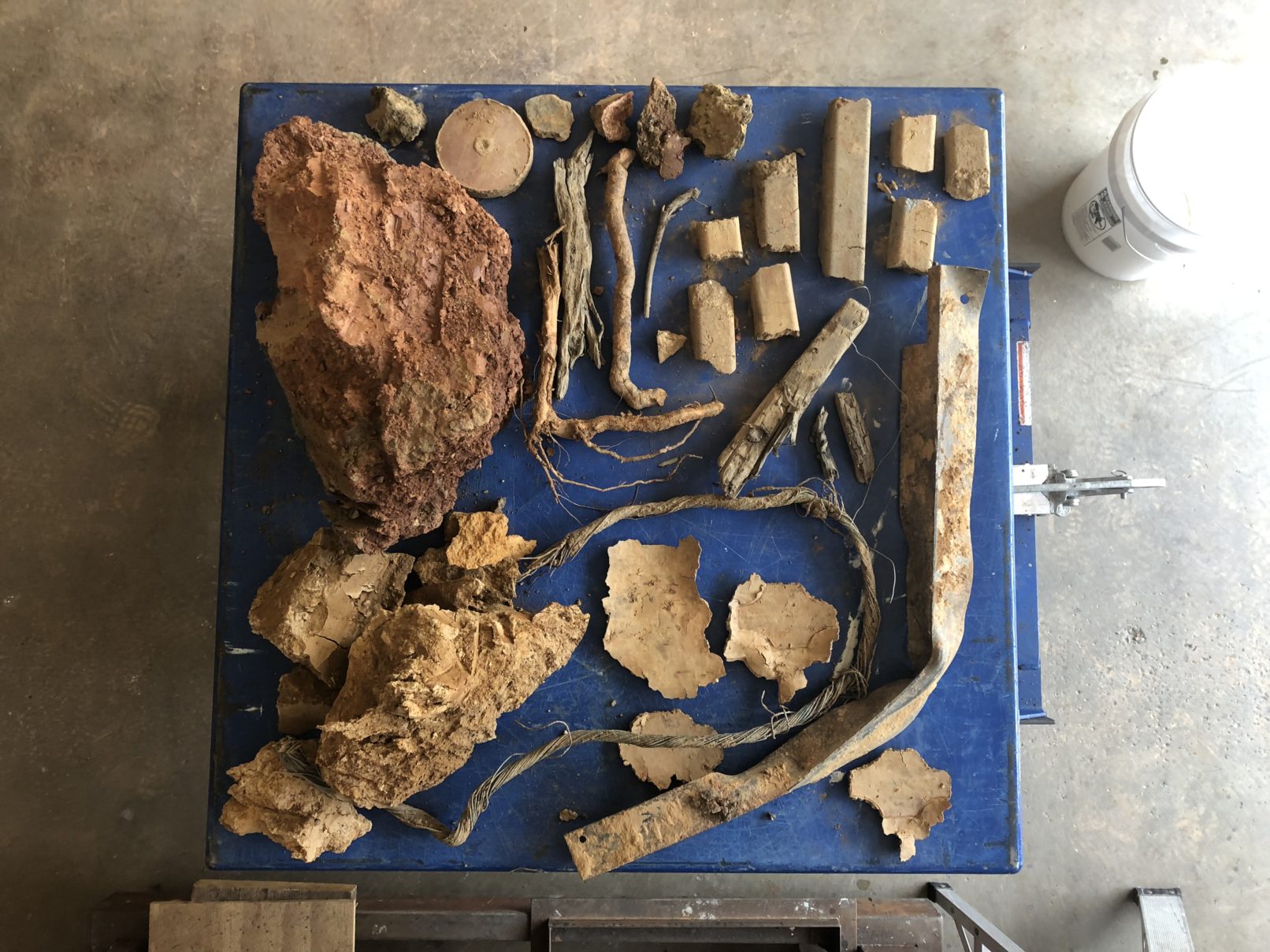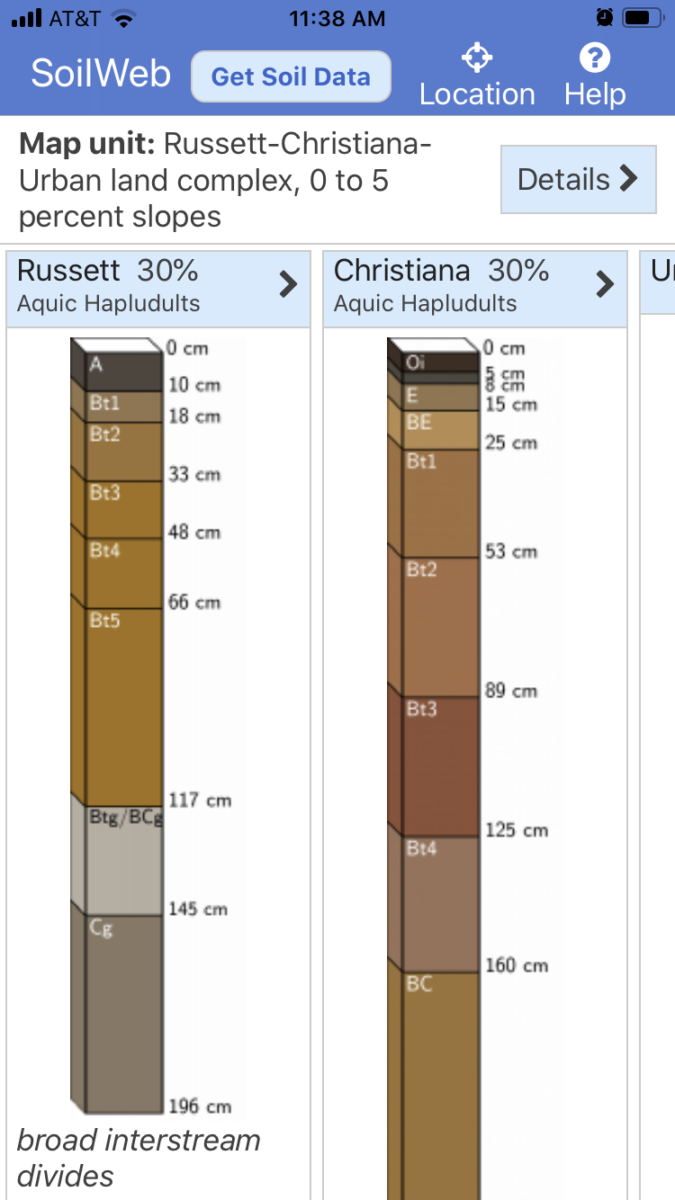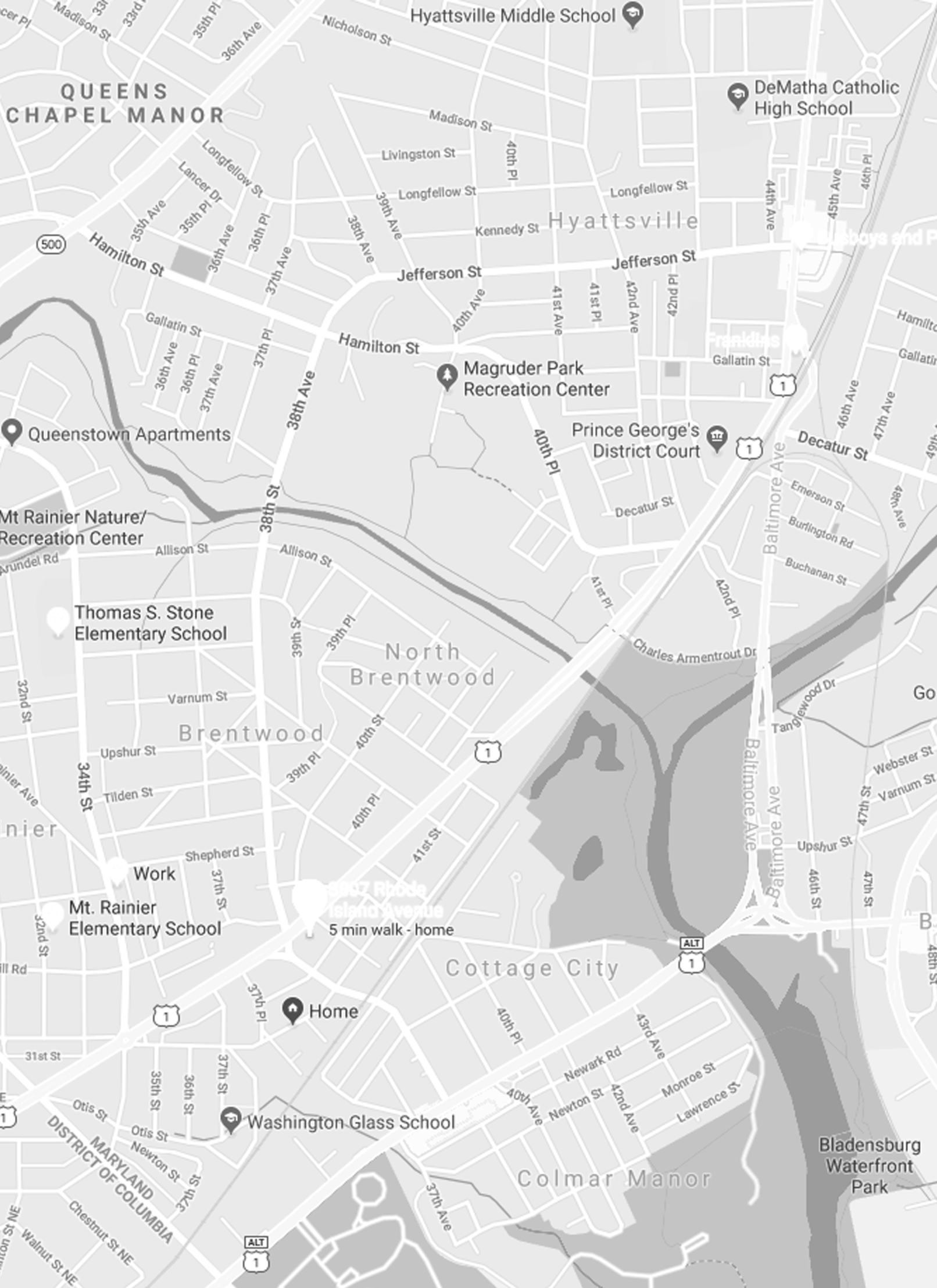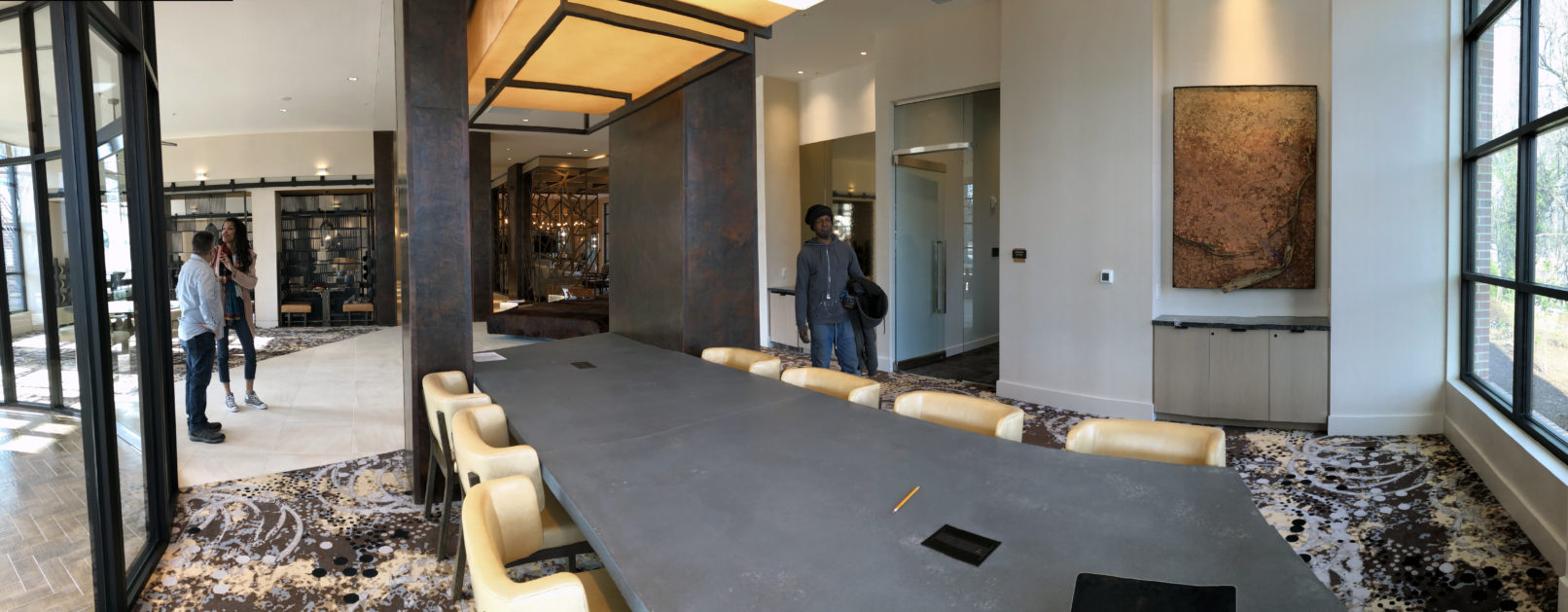Video artist statement
I love this project because it’s right in my neighborhood. This is my soil, my clay. It’s from Artisan 4100, a site right around the corner from my house, and easily walkable from my studio. It’s a mapping piece using clays and detritus from the construction site, displayed right there. I love the idea that the clay and artifacts start to tell their own stories. And I love that once construction is done and the ground is sealed over, this piece remains to show what is underneath our feet.
The title comes from a line by poet Adrienne Rich…
“I don’t want to know
wreckage, dreck, and waste, but these are the materials
and so are the slow lift of the moon’s belly.
over wreckage, dreck, and waste, wild treefrogs calling in
another season, light and music still pouring over
our fissured, cracked terrain.
If you had known me
once you’d still know me though in a different
light and life. This is no place you ever knew me.
But it would not surprise you
to find me here, walking in fog, the sweep of the great ocean
eluding me, even the curve of the bay, because as always
I fix on the land. I am stuck to earth…these are not the roads
you knew me by. But the woman driving, walking, watching
for life and death, is the same.”
———
I love this Atlantic article on the poem, from 2017:
by Jessie Li
April 14, 2017
“In her 13-section poem “An Atlas of the Difficult World,” Adrienne Rich portrays an America of devastation and longing. The first 12 sections chart the geography of American history, traversing the country from California to Vermont, as well as a geography of human empowerment, from “some for whom peace is a white man’s word and a white man’s privilege” to:
some who have learned to handle and contemplate the shapes of
powerlessness and power
as the nurse learns hip and thigh and weight of the body he has
to lift and sponge, day upon day …
In particular, Rich interrogates national identity and patriotism when horrific events—she mentions Selma and Wounded Knee—exemplify “your country’s moment.”
Yet if the antidote to despair is hope, then “Dedications,” the last of the 13 sections, is a kaleidoscopic testament to hope, at once a letter and a prayer. Rich turns directly to the reader:
I know you are reading this poem
late, before leaving your office
of the one intense yellow lamp-spot and the darkening window …
She evokes the image of feeble light against growing darkness throughout the poem, juxtaposing the dim desolation of life with the illumination of resistance.
